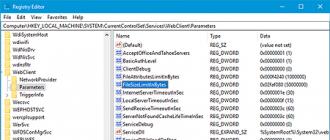By the concept of “restoring Windows 8”, users often mean different things: some simply restore factory settings, while others mean uninstalling previously installed updates or undoing changes that occurred after installing a suspicious driver. Today it is customary to consider several useful methods that will help roll back Windows OS versions 8 and 8.1. We will talk about them in today's article.
To return your PC to working order, it is not necessary to reinstall the system
Such points are very often used to bring the system back on track. They are created without the participation of the user, after installing various utilities, drivers, etc. You can create them yourself, manually. The method helps in situations where errors occur when loading or operating the machine after installing a program.
You can use the method like this:
- get to the control panel (first select the “Start” button), click “Recovery”;
- Click on “Run System Restore”;
- enable the renewal process by selecting the point you are interested in by date.
Canceling updates
Sometimes, after installing basic updates, our computer begins to behave incorrectly: the Internet may disappear, errors may appear when working with certain programs. To avoid such developments, experts recommend using update rollback. Restoring Windows 8.1 using this method is quite fast. To do this, use the Windows Update Center, where you click on “Remove updates.” An alternative way is to use the command line.

So, after going to the Update Center, you need to select the “Installed updates” link. Here you will see all the updates installed at the moment, their installation date and code. Having figured out exactly after what period the problems with the machine began, calculate the update and remove it by pressing the appropriate key. The PC will ask you to confirm your decision, to do this, click “Yes”.
Now reboot the system - this will help you understand whether the error has disappeared or whether you need to look for another way out to solve the problem.
Recovery image
To roll back to normal, the system may need a backup copy with all drivers, programs, and, if necessary, files. Such images are present on all devices on which the OS was installed by the manufacturer. The images are located in a hidden partition of the hard drive and contain programs installed by the manufacturer, as well as the system itself.

The user can create such an image on his own at any time. It's best to do this after installing and performing basic settings. If the hidden partition is missing or was previously deleted, you can create it again.
So, you need to select “Delete all files and reinstall Windows” in the “Recovery” section. No preparation is required, because everything happens automatically.
Reset
If a computer running under Windows version 8 (8.1) is not working properly, you can “reset” the basic settings, but your important files will not be deleted. It is preferable to do this when all other options have failed. The method is highly effective, but the reset can only be used if Windows starts on its own.
In the panel on the right side of the monitor, find “Settings”, and then find the “Change settings” option. Next, it is important to select the “Recovery” section in the “Update and Recovery” list.
The following options are offered here:
- deleting all files and reinstalling Windows;
- recovery without deleting files (what interests us now);
- special download options (not relevant to this article).

If you click on the second option, you will reset all system settings without affecting the files that are on the computer. In other words, videos, documents, music and a number of other downloads will remain intact. However, third-party utilities that you installed yourself will be removed. Programs from the Windows 8 store will be reinstalled automatically.
The first point will allow you to return the car to factory settings. If you select it, you may lose important data. If the disk is divided into a pair of disks (C and D, for example), then non-system partitions can be left untouched.
Clarifications:
When resetting the settings, the computer uses the recovery partition, which is present on all devices with Windows pre-installed. If the OS was installed on your own, a reset is also possible, but you will have to use the distribution kit of the installed Windows, from which the necessary files will be taken.
Many users upgrade to version 8.1 after receiving Windows 8. After resetting the settings, they need to update again, because in this case you will receive a “clean” version. During these steps, you may be asked for a product key (the system may ask you to enter it at one of the steps).
If you can't log in
If nothing loads, the user can get to the update mechanism (to do this, find the disk with the system). The procedure is as follows:
- boot from the installation disk or a recovery disk created in advance, click “System Restore”;
- Find the “Diagnostics” item, then click on the “Restore” button.

As you can see, you just need to find the required disk - and the problem will be solved. After completing these steps, you will have the correct OS version, and a report of programs that had to be removed will appear on your desktop.
Results
Restoring Windows 8 or 8.1 is possible even in the most difficult situations. All that is required for this is to study the instructions presented above and follow each of its points. We hope that one of the proposed methods will help resolve the issue by saving important files on your computer. Good luck!
Sometimes, due to the installation of a program, driver, or virus infection, Windows may begin to run slowly or stop working altogether. System Restore allows you to return your computer's system files and programs to the state they were in when they were working correctly, and avoid lengthy troubleshooting. It will not affect your documents, images and other data.
There are times when it is necessary to perform a system rollback - restoring the main system files from a “snapshot” of an earlier state - a restore point or OS image. With its help, you can return Windows to working condition, but at the same time, all programs recently installed on drive C (or any other, depending on which drive the backup will be carried out), programs, etc. will be deleted. It is quite possible that adjustments were made during this period.
If you can login
Rollback to the last point
If, after installing a new application or update, only part of the system stopped working for you (for example, some driver crashed or a problem arose in the program), then you can restore to the last point when everything functioned without failures. Don't worry, your personal files will not be affected.

Attention!
The recovery process will not be able to be interrupted once it is started. It can only be canceled after the process is completed.
Once the process is complete, your computer will reboot and everything will be as before again.
If the system is damaged and does not work
Method 1: Use a restore point
If, after making any changes, you cannot log into the system, then in this case you need to rollback through backup mode. Usually, in such cases, the computer itself switches to the required mode. If this does not happen, then when starting the computer, press F8(or Shift+F8).

After this, the recovery process will begin and you can continue working on your computer.
Method 2: Backup from a bootable USB flash drive
Windows 8 and 8.1 allow you to create a bootable recovery disk using standard tools. It is a regular USB flash drive that boots into the Windows recovery environment (that is, limited diagnostic mode), which allows you to repair startup, the file system, or fix other problems due to which the OS will not boot or runs with noticeable problems.

The backup may take quite a long time, so be patient.
Thus, the operating systems of the Microsoft Windows family allow using standard (regular) tools to perform a complete backup and restore of operating systems from previously saved images. In this case, all user information will remain intact.
A restore point will help you roll back the system, if it starts to freeze and slow down, to a working state. Such points are created either automatically by the system after a certain time, or automatically when the system recovery tool detects changes to the computer configuration: installation of a new program or driver.
The user can also create a restore point manually. If your operating system is working perfectly, then naturally it makes sense to create a restore point. In the future, when the system begins to work incorrectly, it will be possible to return it to working condition.
It is also better to create a restore point if you are going to install an unfamiliar program or new drivers on your computer. If after installation the operation of the system changes for the worse, then it will be possible to return it to the state when it was fully functioning. In this case, the system will return all system files and Windows settings that were in place at the time the restore point was created. This will help you get rid of incorrectly working drivers, programs, downloaded viruses or unsuccessful experiments with the registry.
Please also note that all programs that were installed after the restore point was created will be deleted from your computer.
First, let's figure out how to create a restore point. Move the mouse cursor to the lower left corner, and when the “Start” square appears, press the right mouse button. A window will open with the most frequently used commands, select from the list "Control Panel".

Here we will be interested in the point "System Recovery Setup".

A new window will open "Properties of the system" on the tab "System protection". Here, please note that opposite the partition of the hard drive on which the OS is installed, “Enabled” is indicated in the “Protection” section. Only in this case will it be possible to roll back the system to the desired restore point.

If it says “Disabled”, click on the “Configure” button, then mark the item with a marker "Enable system protection" and click "Apply", "OK". In the same window, just below, you can see the maximum allocated volume on the hard drive for recovery points and how much space they currently occupy. In the event that the allocated volume runs out, the system will delete old recovery points by date and create new ones.

To create a system restore point, click on the “Create” button. A window will appear "System protection". In the field you need to enter a description for the point and click “Create”. It is not necessary to write the date and time of creation, as the system will do this automatically.

Then wait until the system completes the process and the following window appears.

Now you can carry out the necessary actions with programs, drivers and any other system components.
If the experiment fails, consider what needs to be done to roll back the system to working condition.
Let's go "Control Panel" – "Recovery" In this window, select the item "Run System Restore".

A window will appear stating that all user data will not be affected during recovery: photos, music, videos, but the latest installed programs or drivers may be deleted. Click Next.

If you have system restore points created automatically, then you need to select "Select a different restore point" and click "Next".
A list of available points will open, select the one you need. If in doubt, press the button "Search for affected programs". The system will analyze and show which programs and drivers will be deleted after recovery. When you decide, select the desired restore point and click Next. Wait for the process to complete. The computer will then restart and the system will return to working condition.

Now you know how you can create a restore point manually, and if you find problems with your computer, roll back the system to a working state.
Watch the video on how to create a restore point:
Watch the video on how to restore the system from a checkpoint:
Rate this article:
System Restore is an important feature of Windows introduced into it starting with the ME version. It is designed to restore the functioning of the operating system or return its state to one of the previously captured ones by creating backup copies of registry entries and system files, installed applications and drivers.
A restore point is a kind of snapshot of the system containing the above elements. It can be created manually by the user or automatically by Windows 8, based on conditions specified by the user or by software that supports such a function, for example, before making changes to the registry.
The renewal (rollback) process involves replacing system files with those located at the G8 restore point, as well as removing affected applications and drivers that were installed after the rollback point was created.
Having understood the basic terms, you can start practicing: today we’ll look at how to make a restore point, how to roll back Windows 8 and set up system recovery.
How to enable the creation of rollback points in Windows 8
After installing Windows 8, this feature is enabled by default. An exception may be the use of a custom OS build, where the function has been deactivated in order to save disk space or extend the life of the SSD.
- To enter the configuration parameters, call the “Start” context menu and select “System”.
- Click on the “System Protection” link located on the left side of the frame.
- Go to the tab called “System Protection”.
- If the function is active in Windows 8, you will see the message “Enabled” next to the system partition. When it says “Disabled”, select the system partition and click “Configure”.
- Move the checkbox to the appropriate item, use the slider to indicate the available amount of disk space for storing recovery point files and click “OK”.

By going into the settings with the option activated, you can change the space allocated for storing backup copies and see the volume currently occupied by them.
Create a rollback point
Creating a Windows 8 resume point manually is not a fun task.
- On the “System Protection” tab in its properties (see how to launch it in the previous paragraph), click “Create”.
- Enter the name of the backup copy of critical system files and registry settings, as well as a short comment for easy identification.
- After entering the data, click “Create”.
As a result, an information message will appear indicating that the restore point was created successfully.

Rollback of the “eight” to the previous state
If it is time to use the system recovery function, for example, after a virus attack or installation of an incompatible driver, follow these steps.
- Launch the system protection window and click “Restore” if the function is active and there is at least one Windows 8 rollback point on the computer.
You can also start the recovery through the “Control Panel” by switching the visualization of its elements to icons and launching “Recovery”.

- When the wizard appears, simply click “Next”, having read the information that user data (photos, saved games, documents) will not be changed, even if it is on the system partition.

- Click on the link “Run System Restore”.

- Click on the button that allows you to specify a rollback point so that the Windows 8 user-created restore point appears in the list.
- Select the required copy from the proposed list, focusing on the creation date, title and attached comment, and click “Next”.

By clicking “Search for affected applications” you will see which programs will be removed from the computer as a result of Windows 8 recovery.
- In the information window, familiarize yourself with the information provided and click “Finish” to start the OS rollback.

- We confirm our intentions to perform these actions and reboot the computer.
In just a few minutes (sometimes the rollback process takes 5-8 minutes, and sometimes, if there is a huge number of affected applications and files, the procedure can take up to 15 minutes or more) Windows 8 will start in the state it had at the time the rollback point was created. All your personal data (documents, photos, videos located on the system disk) will not be affected.
A special feature of the function is the ability to resume Windows 8 even when the operating system does not boot. This is done through the recovery console in special boot parameters or using the installation distribution of Windows installed.
(Visited 1,614 times, 1 visits today)






